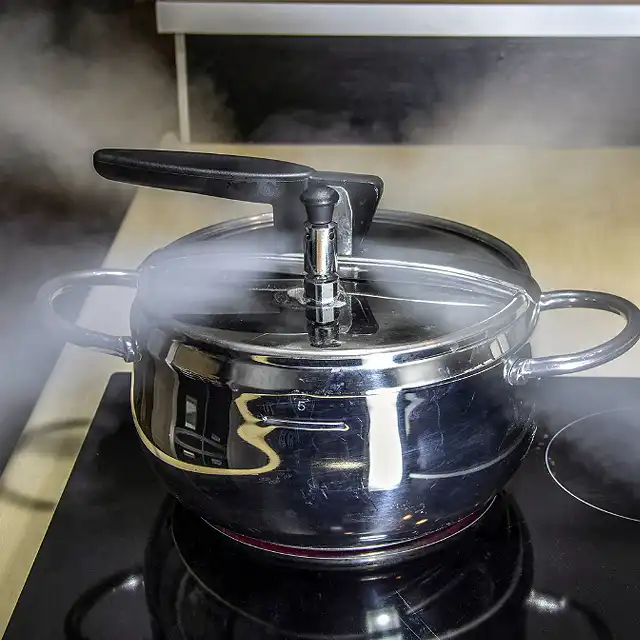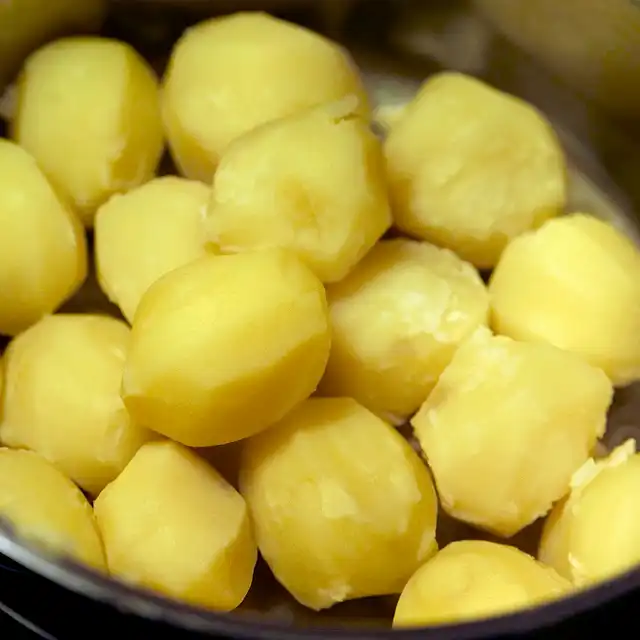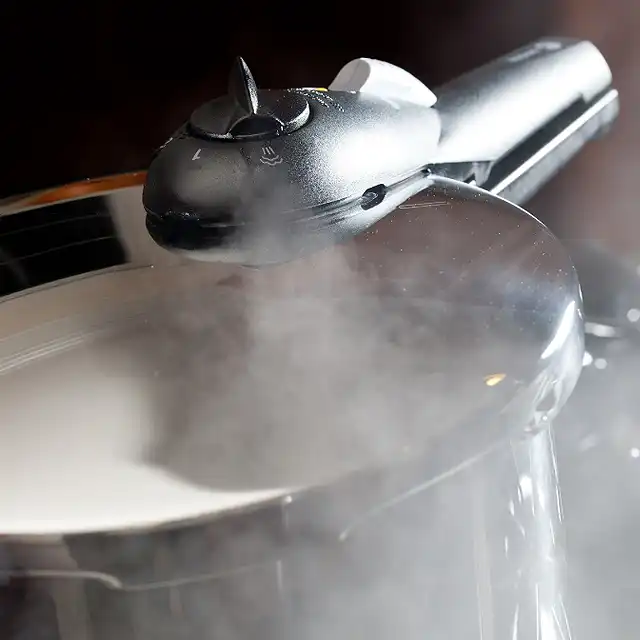If you’ve been following the Plant Paradox, or any diet for that matter, you will probably be familiar with some creative ways of transforming your favorite foods into diet-compliant (but still delicious) alternatives. Cauliflower pizza, coconut flour muffins, you name it!
The good news is: There’s actually a way to make some foods healthier – no tricky substitutions required. That means, you can have your potatoes, and eat them too – under one condition: you have to pressure cook them! Indeed, your pressure cooker can actually kill lectins during this unique cooking process.
But how does pressure cooking actually work? Watch this video to find out which foods are safe to pressure cook, and which lectin-packed foods should be avoided, no matter what!

In the world of dieting, finding healthier alternatives to your favorite foods can be a challenge. But fear not! There’s a way to transform your meals without tricky substitutions. Enter the pressure cooker. By using this versatile kitchen tool, you can actually make certain foods healthier by purging them of harmful lectins. Say goodbye to worries about potatoes, tomatoes, and beans, as the pressure cooking process effectively removes the lectins from these foods. But wait, there’s more! In this video by The Dr. Gundry Podcast, you’ll discover which foods are safe to pressure cook and which ones you should avoid, ensuring that you can indulge in delicious meals while staying on track with your diet.
Now let’s dive deeper into how pressure cooking works its magic. The key lies in the higher temperatures reached during the cooking process, as pressure cooking raises the boiling point of water. This means that foods cooked in a pressure cooker are cooked faster and at a higher temperature, effectively knocking out lectins. Pressure cooking also forces liquid through the food more efficiently, further aiding in the removal of these harmful compounds. However, keep in mind that not all foods can benefit from pressure cooking, as some lectins are simply too strong to be broken down. So, whether you’re a chili lover or a rice enthusiast, this video will provide all the information you need to make the most out of your pressure cooker and keep your diet on track.
Can Your Pressure Cooker REALLY Kill Lectins?
Introduction
If you’ve been following the Plant Paradox, or any diet for that matter, you will probably be familiar with some creative ways of transforming your favorite foods into diet-compliant (but still delicious) alternatives. Cauliflower pizza, coconut flour muffins, you name it! The good news is: There’s actually a way to make some foods healthier – no tricky substitutions required. That means you can have your potatoes, and eat them too – under one condition: you have to pressure cook them! Indeed, some of your favorite foods can be purged of their harmful lectins during this unique cooking process.
How Pressure Cooking Works
Pressure cooking works by raising the boiling point of water, allowing foods to cook faster at a higher temperature. This higher temperature and increased pressure force liquid through the food more efficiently, effectively knocking out lectins in some but not all foods. It’s important to note that pressure cooking is not a fix-all solution, as there are certain foods with strong lectins that cannot be broken down through this cooking method.
Foods Safe to Pressure Cook
Good news for chili lovers, pressure-cooked beans are safe on Phase three of the Plant Paradox program. Soak the beans and change the water a few times before pressure cooking them until they’re completely soft. The cooking time can vary depending on the type of beans used. White rice, especially white Basmati rice from India, is another great food to pressure cook. Additionally, potatoes and nightshades like tomatoes, peppers, and eggplant can be pressure cooked without the need for peeling or deseeding.

Foods to Avoid Pressure Cooking
Unfortunately, wheat and other grains like buckwheat, barley, rye, and oats (even gluten-free oats) should be avoided when pressure cooking. Wheat lectins, especially gluten, are not effectively eliminated through pressure cooking. Wheat products such as flour, bread, pasta, cake, and cookies should not be pressure cooked. Additionally, commercially raised meat should not be pressure cooked, as the lectins from wheat, barley, oats, and rye are present in the food that most commercially raised animals eat.
Benefits of Pressure Cooking Starchy Foods
Starchy foods like potatoes and rice can benefit from pressure cooking. The resistant starch in rice and the starch in potatoes can become more gut-friendly when pressure cooked. For rice, cook it a day in advance, refrigerate it, and then heat it up when you’re ready to use it. This boosts the gut bug-friendly starch content. Pressure-cooked potatoes do not need to be peeled before cooking, although it is recommended to do so as the peel can contain extra lectins.

Nightshades: Tomatoes, Peppers, Eggplant
Nightshades like tomatoes, peppers, and eggplant can be pressure cooked without the need for peeling or deseeding. This is great news for those who find these processes tedious. You can even use pressure-cooked tomatoes to make a delicious pizza sauce and enjoy it on a cauliflower crust with buffalo mozzarella. Pressure cooking nightshades opens up a world of possibilities for flavorful and satisfying meals.
Pressure Cooking Summer and Winter Squash
Both summer and winter squash, including zucchini, pumpkin, acorn squash, and butternut squash, can be pressure cooked without the need for peeling or deseeding. This makes meal preparation much easier and more convenient. Pressure cooking squash allows you to enjoy these nutritious vegetables without worrying about lectin content.
Pressure Cooking and Wheat
Pressure cooking is not effective in eliminating lectins from wheat products. Wheat lectins, including gluten, are resistant to pressure cooking, so it is best to avoid pressuring cooking wheat flour, bread, pasta, and other wheat-based items. Even if you find a recipe for pressure cooker lasagna, it is important to use wheat-free noodles to adhere to a lectin-free diet.

Other Grains Not Suitable for Pressure Cooking
In addition to wheat, other grains like buckwheat, barley, rye, and oats (including gluten-free oats) should not be pressure cooked. These grains contain lectins that are not effectively eliminated through pressure cooking. If you are following a lectin-free diet, it is advisable to avoid pressure cooking these grains and opt for alternatives instead.
Pressure Cooking and Commercially Raised Meat
Pressure cooking does not effectively eliminate lectins from commercially raised meat. Animals that are fed diets high in lectin-heavy grains like wheat, barley, oats, and rye will have meat that is packed with lectins. To avoid consuming lectins from meat, it is recommended to choose grass-fed meat instead. Grass-fed meat is not only better for your health but also for the environment and animal welfare.
Conclusion
In conclusion, pressure cooking can be a valuable tool in your kitchen for making some foods healthier by eliminating lectins. However, it is not a fix-all solution, and there are certain foods that cannot be effectively purged of lectins through pressure cooking. It is important to be aware of which foods are safe to pressure cook and which foods should be avoided. By making informed choices and utilizing the benefits of pressure cooking, you can enjoy a wide variety of delicious and lectin-free meals.